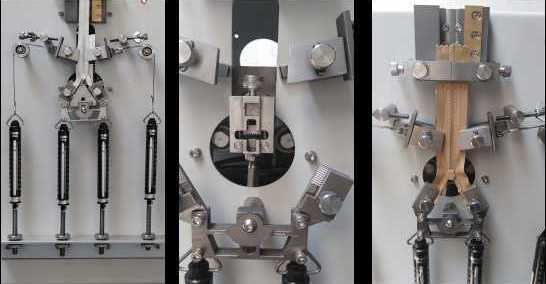
NewsInformation Center
What are some common reasons for zipper failure during the ASTM D2061 test?
2023/07/14
There are various reasons why a zipper may fail during the ASTM D2061 test. Here are some common causes of zipper failure during this test:


1. Material defects:
Zipper failure may occur due to defects in the materials used to manufacture the zipper. For example, the zipper tape or teeth may be weak, brittle, or prone to deformation, which can cause the zipper to fail under stress.
Zipper failure may occur due to defects in the materials used to manufacture the zipper. For example, the zipper tape or teeth may be weak, brittle, or prone to deformation, which can cause the zipper to fail under stress.

2. Slider malfunction:
The slider is the component that moves along the zipper teeth to open and close the zipper. If the slider is not functioning properly, it may cause the zipper to jam or the teeth to break, leading to failure during the ASTM D2061 test.
The slider is the component that moves along the zipper teeth to open and close the zipper. If the slider is not functioning properly, it may cause the zipper to jam or the teeth to break, leading to failure during the ASTM D2061 test.
3. Improper installation:
If the zipper is not installed properly in the product, it may experience excessive stress during use, leading to premature failure during testing. Improper installation can include issues such as misaligned teeth or incorrect stitch patterns.
If the zipper is not installed properly in the product, it may experience excessive stress during use, leading to premature failure during testing. Improper installation can include issues such as misaligned teeth or incorrect stitch patterns.
4. Wear and tear:
Over time, zippers may become worn or damaged due to regular use, exposure to environmental factors, or other factors. This wear and tear can weaken the zipper and make it more prone to failure during the ASTM D2061 test.
Over time, zippers may become worn or damaged due to regular use, exposure to environmental factors, or other factors. This wear and tear can weaken the zipper and make it more prone to failure during the ASTM D2061 test.

5. Excessive force:
Applying excessive force to the zipper during use or testing can cause it to fail. This can happen if the zipper is used to secure a load that is too heavy or if the testing machine is set to a higher load than the zipper is designed to withstand.
Applying excessive force to the zipper during use or testing can cause it to fail. This can happen if the zipper is used to secure a load that is too heavy or if the testing machine is set to a higher load than the zipper is designed to withstand.
In summary, zipper failure during the ASTM D2061 test can occur due to defects in materials, slider malfunction, improper installation, wear and tear, or excessive force. Manufacturers can use this information to identify and address potential issues with their zippers and ensure that their products meet the required standards for strength and durability.
Previous: The importance of flammability testing in ensuring consumer safety
N e x t : Flammability Testing of Textiles: Key Considerations



